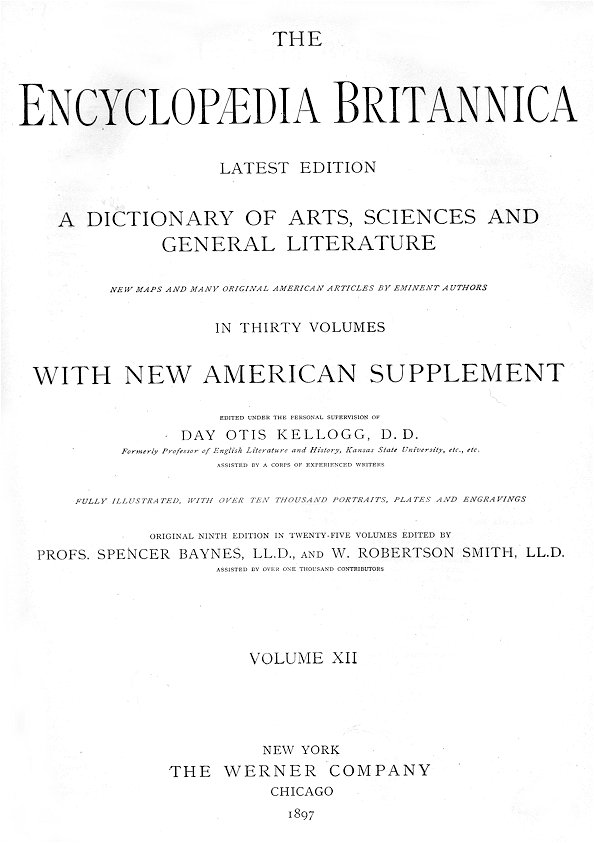Encyclopaedia Britannica
Today, a new look at an old encyclopaedia. The University of Houston's College of Engineering presents this series about the machines that make our civilization run, and the people whose ingenuity created them.
I don't write many episodes of this program without referring to one of my well-thumbed editions of the Encyclopaedia Britannica. My 1970 edition has thirty thousand large, idea-dense pages, and they address almost anything I want to know about. I often start out with a specialized sourcebook and then find even richer information in the Britannica.
Encyclopaedias are audacious books. They're cyclic, in the sense that they try to close the circle of human knowledge. That can't be done, of course. But it's in the nature of our species to try to do it anyway.
The earliest encyclopaedia we can trace was written by Plato's nephew Speusippus in the fourth century BC. For two millennia encyclopaedia writers have tried every scheme for ordering knowledge.
The familiar alphabetic form, with a cross-referenced index, is fairly recent. Encyclopaedias vary in size. Some are only one volume long. One fifteenth-century Chinese encyclopaedia ran to thirty thousand chapters.
The parent of our modern encyclopaedias was Chambers' Cyclopaedia, published in England in 1728. Chambers introduced the first proper system of cross-referencing. But, even more important, he picked up and developed the new idea that encyclopaedias should go beyond conventional scholastic learning. Chambers was an early soldier in the Industrial Revolution. He boldly emphasized current technology as well as well as the classics.
Chambers' Cyclopaedia gave rise to two larger works. Diderot's revolutionary French Encyclopaedia of Sciences, Arts, and Trades started out in 1747 as a translation of Chambers.
The other offspring was initially entitled Encyclopaedia Britannica: or a Dictionary of the Arts and Sciences. It first came out in 1768 as a modest three-volume set, written by three Scots: Andrew Bell, Colin McFarguhar, and William Smellie. Their subtitle, Arts and Sciences, by the way, was the same one Chambers had used.
Diderot's work was a magnificent gesture, but today it's only a beautiful relic. The Britannica, on the other hand, grew through fifteen major editions to a 32-volume set. It's the oldest surviving encyclopaedia and the largest in the English language.
When I was a child, my battered 1897 edition was a prominent member of our family. It was a kind of philosopher's stone for turning ignorance into gold. A lengthy article, written well before the Wright brothers flew, laid out the major issues of flight with uncanny accuracy. And today, one of my richest sources of historical information is a treasured copy of the 1911 edition.
Modern encyclopaedias are the legacy of the Industrial Revolution. They embody the startling news of the eighteenth century -- that you and I can know what kings and emperors know, and that our heads and hands work together to give our world its shape and form.
I'm John Lienhard, at the University of Houston, where we're interested in the way inventive minds work.
(Theme music)
For more information go (where else!) to the Encyclopaedia Britannica.
This is a revised version of Episode 203.
